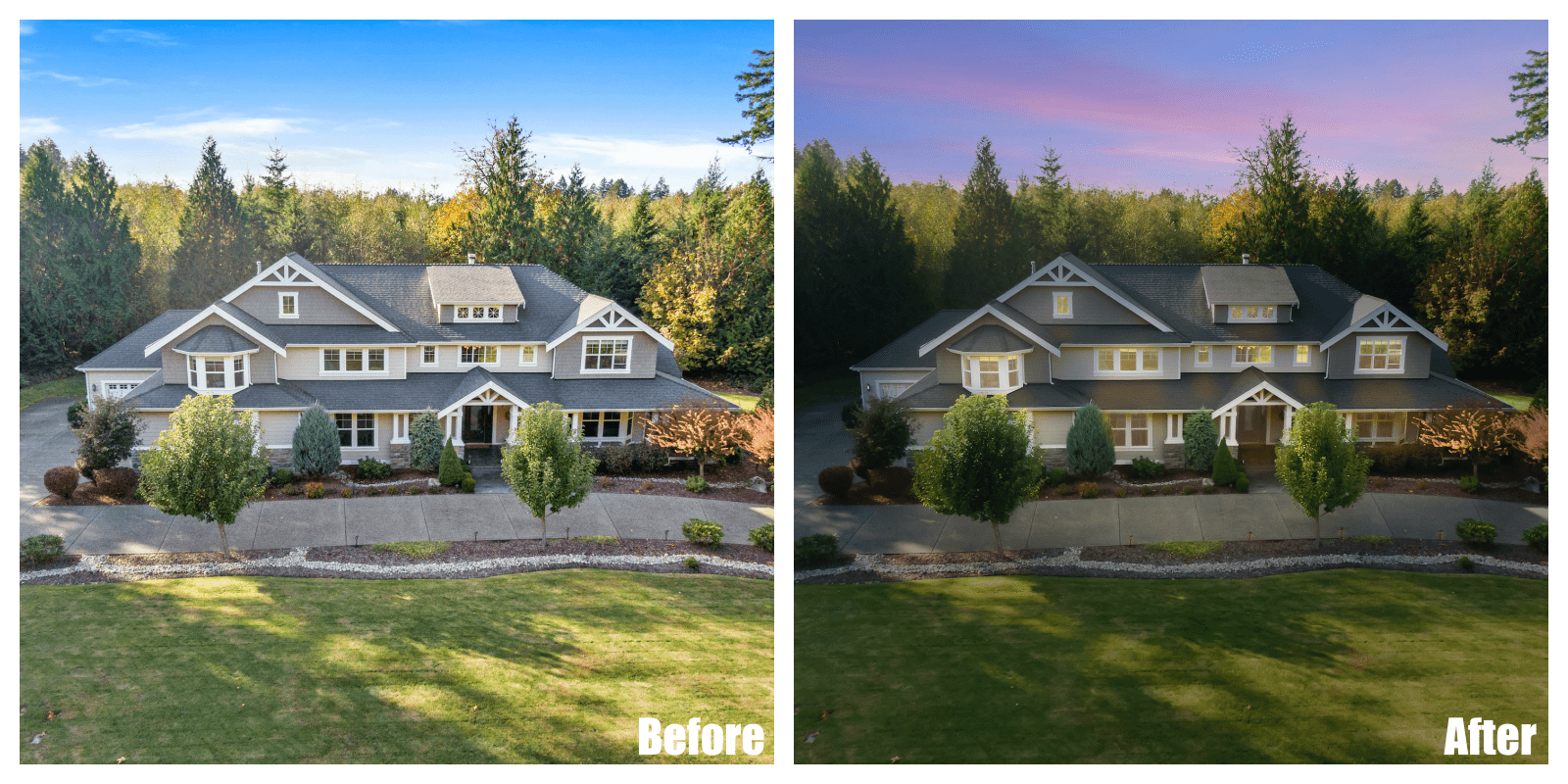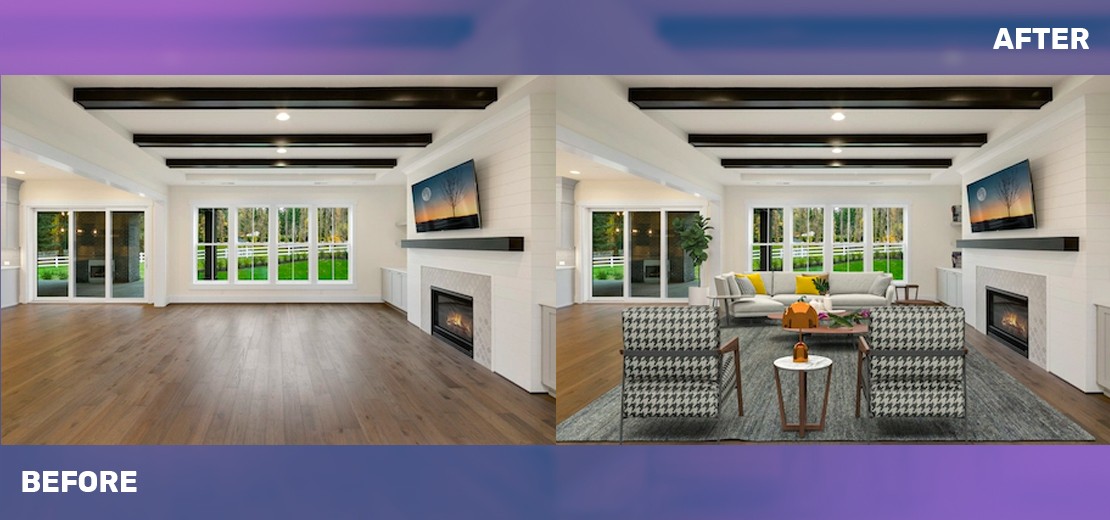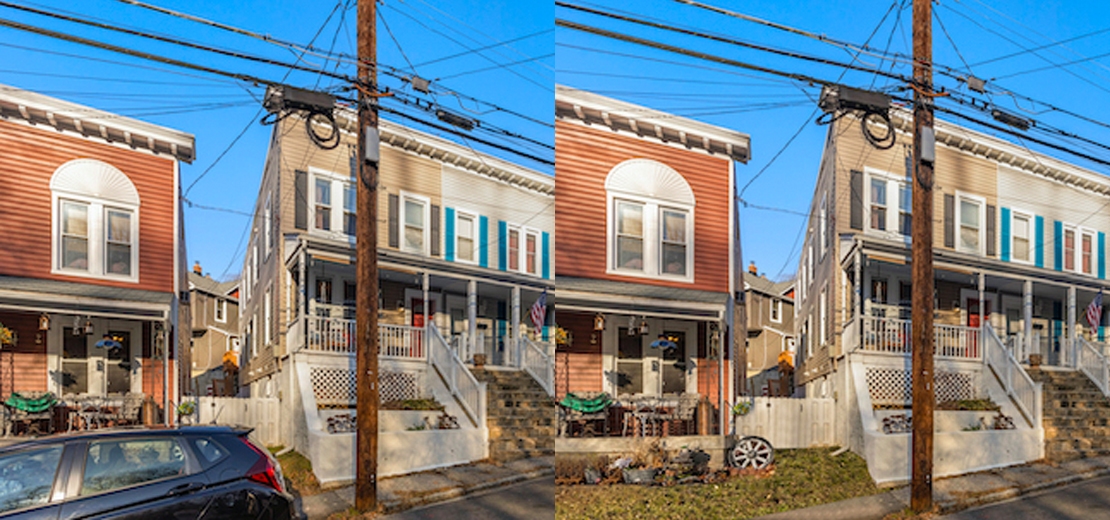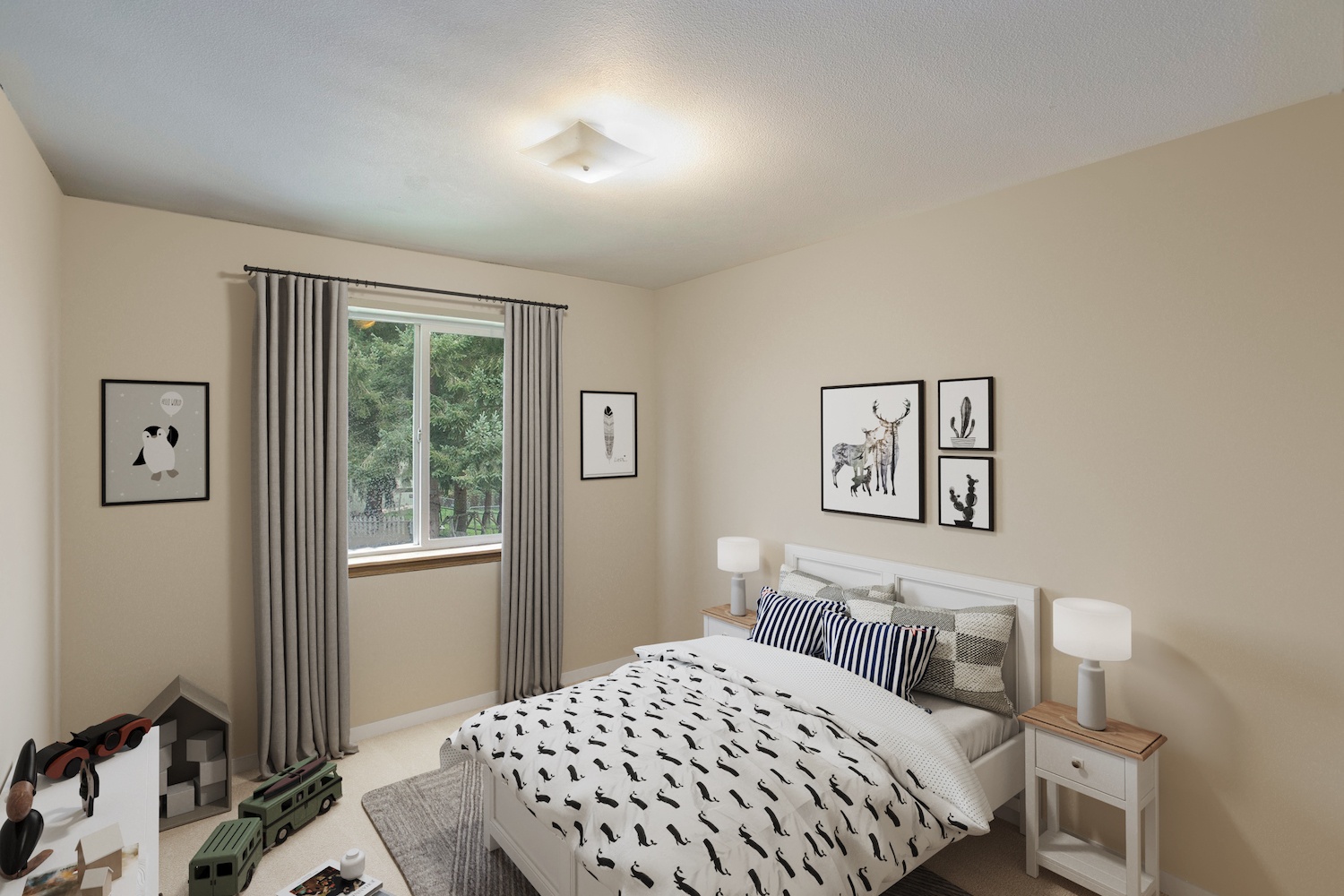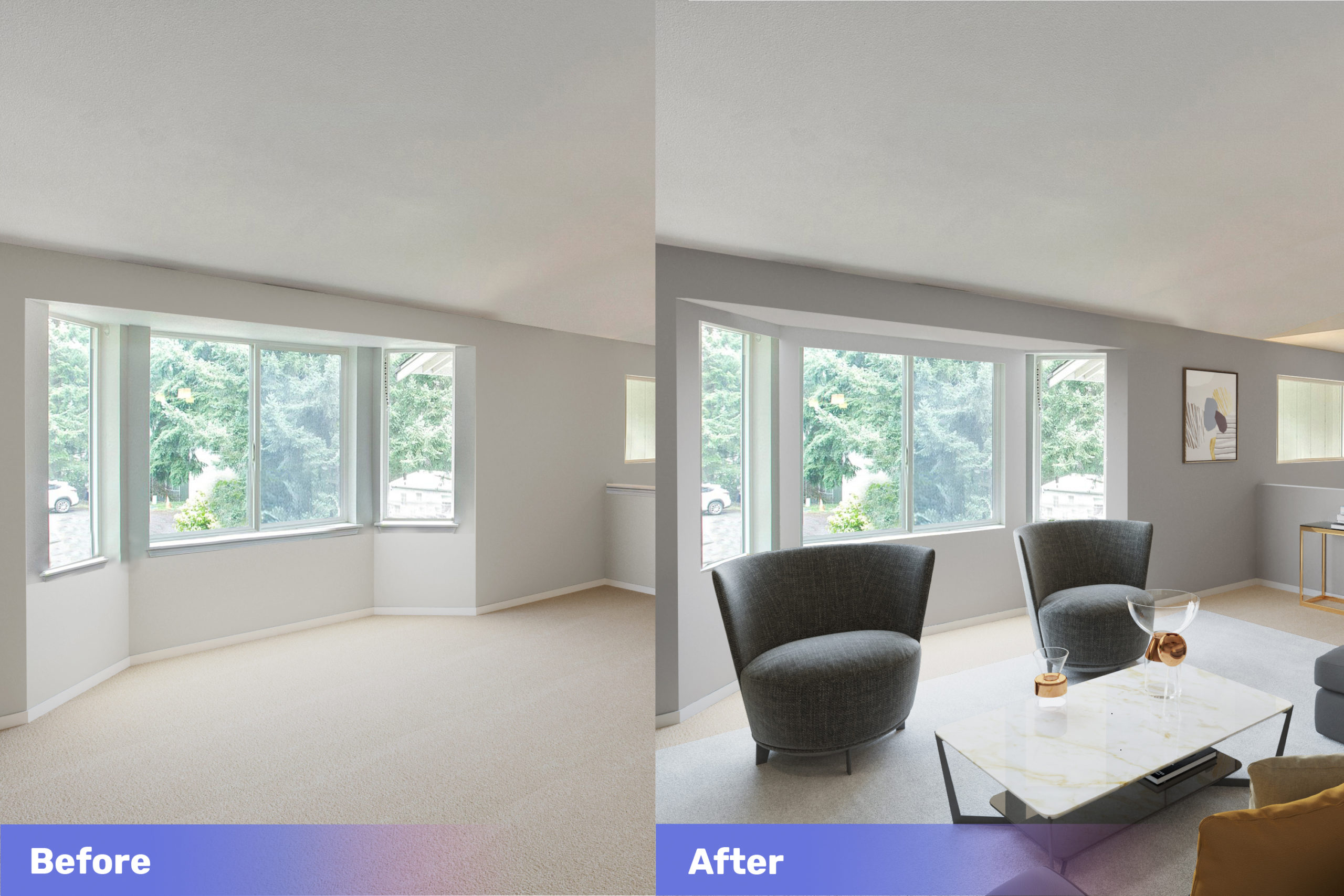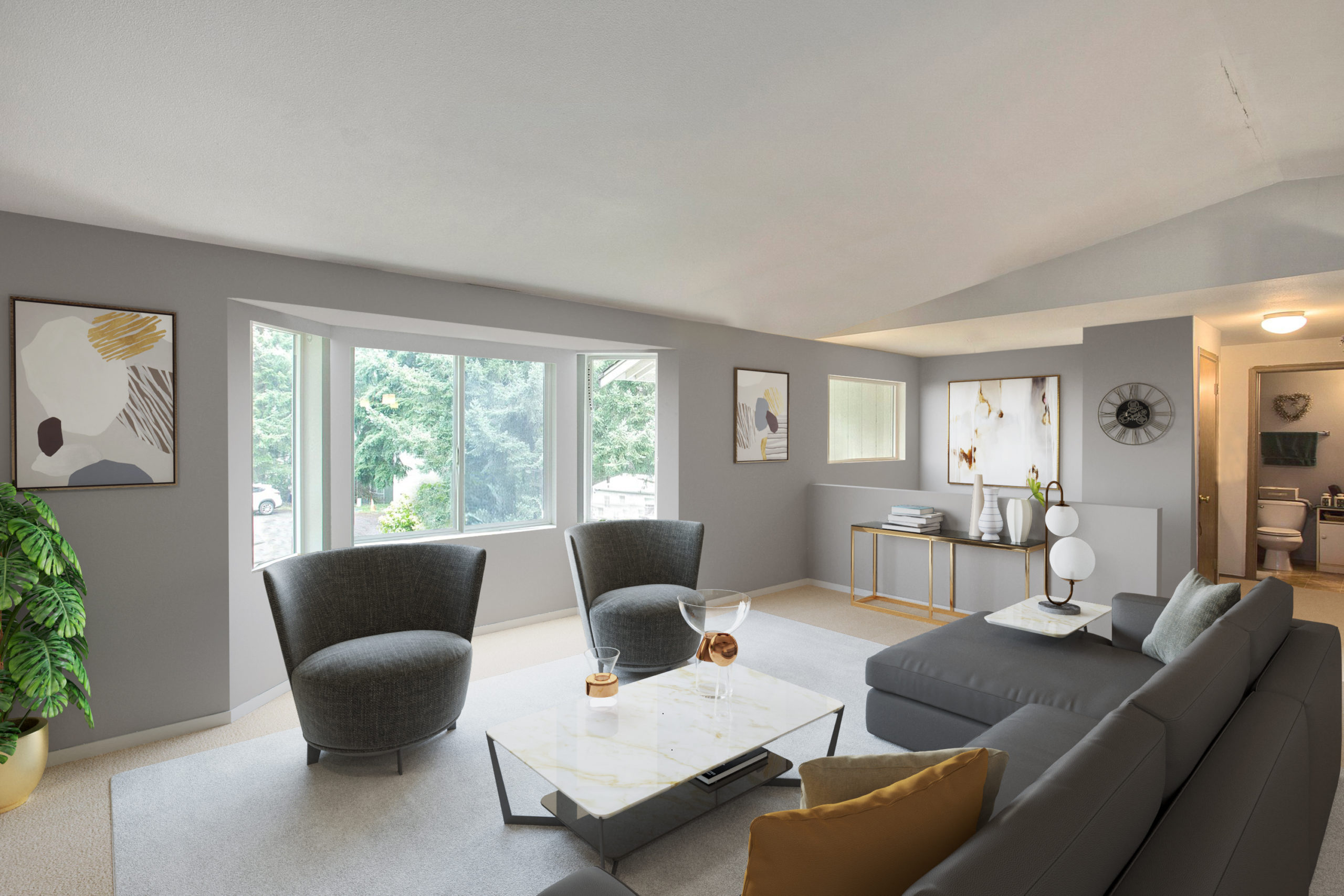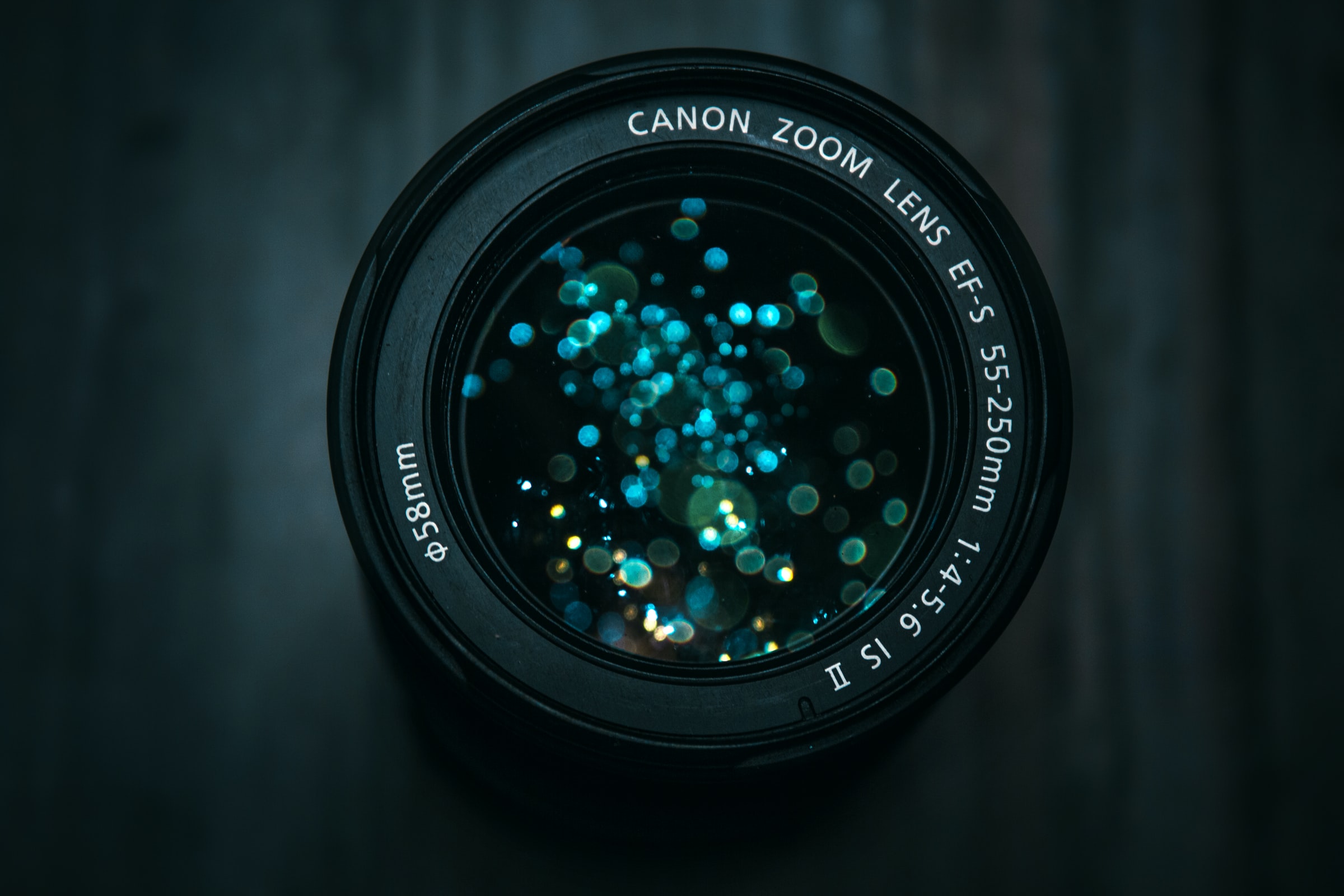The real estate photography industry is fast-paced and continuously evolving to fit the needs of both agents and buyers. There are many techniques born out of changing market preferences and standards. In recent years, social-media-inspired aesthetics inspired trends that led photo editing companies to offer services like virtual twilight.
While there have been no formal studies or statistics on the psychological effects of dusk editing in real estate photography settings, sunrise and sunsets have undeniable appeal aspects.
Why did twilight photo editing become a trend, and what fascinating facts should you know about it?
[lwptoc]Twilight Photo Editing
Most expert photographers would tell you that lighting plays a massive part in the overall appeal. While real estate photography is different from live model shoots, it still follows the same lighting and color aesthetic principles. Instagram influencers rave about the importance of the golden hour, which is around an hour after sunrise and an hour before sunset.
This hour also gives free ambiance lighting for your listing when you’re doing outdoor photographs. There are many ways to attain this effect. To find out more, check out this Twilight photo blog post by Phixer.
Fascinating Real Estate Twilight Photo Editing Facts
1. Special service offered by professionals
Most photography professionals know about the golden hour, but it’s challenging to capture all shots within a limited timeframe. The demand for these unique golden hour lighting conditions inspired day to dusk photo editing from premier real estate photography editing companies.
It may be shocking to know that there is such as thing as a virtual twilight or digital twilight effect.
2. Twilight drives up curb appeal
People often look for properties in the hopes of permanence, so they want a sneak preview of what they look like in different lighting conditions. Twilight shots could also showcase accessories and fixtures that look better in darker states.
Shots from different times will help buyers decide if they like how the property feels in the daytime or even in the dark.
3. Twilight improves your listing’s the luxurious vibe
Buyers often choose properties with excellent value for money, especially those with foreseen long-term rates. However, they may not be ready to spend too much money. Luxury does not usually come with a particular price point but with an emotional aspect.
You might need a day to dusk photo editing service to improve the overall effect. Clients will be more likely to purchase a house or land if they can have luxurious days with the property’s views.
4. The actual act of taking photos during twilight is challenging
The golden hour lasts for at most 60 minutes, and there may be issues during that time. Aside from the actual technical problems, the tricky lighting may require additional reflectors or lighting equipment. Even the most competent photographers may have difficulties in creating the desired output.
Most photographers shoot the property during different times to attain the perfect twilight effect by combining them in post-production.
5. You don’t have to be a twilight photo editing expert
You may want a twilight photo, but you already conducted your photography sessions. Fortunately, experts like Phixer can offer Twilight editing to enhance your current photosets. You don’t have to learn about the complicated processes because they can do it for you and perform the necessary changes.
Final Thoughts
Real estate photo editing companies have improved their offers to include advanced techniques like virtual twilight and home staging. Check out twilight editing if you’re looking for ways to enhance your property appeal in a listing thumbnail or improve your aesthetic pull for a marketing campaign.
